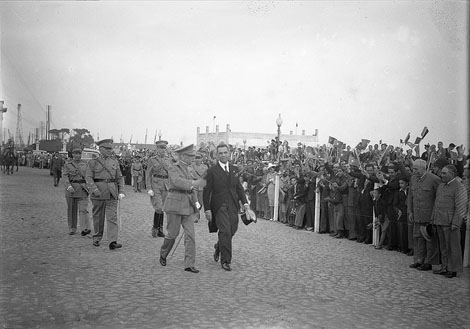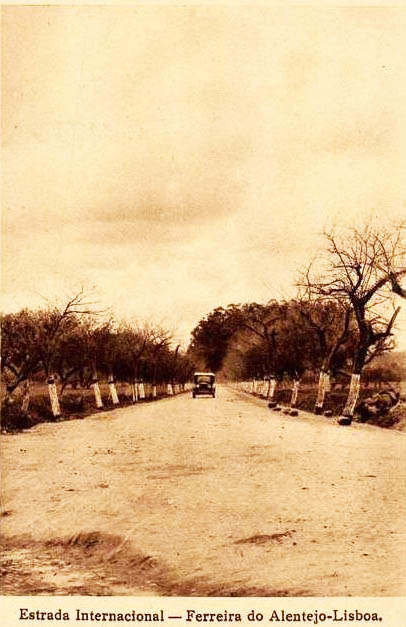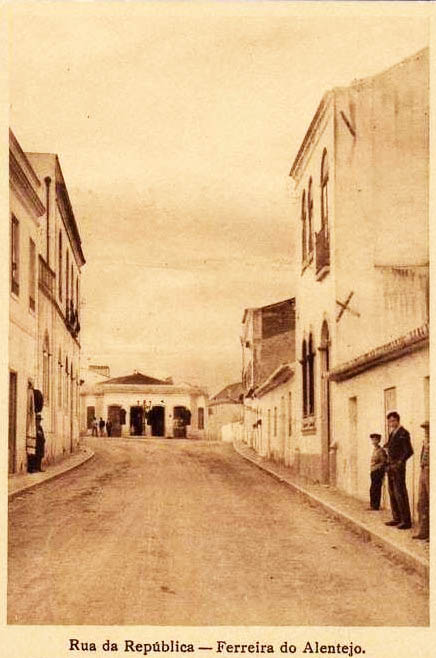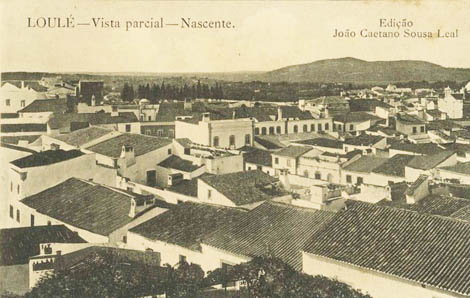 The days that preceded the arrival of President Carmona in the region were lived with hustle and bustle by the Algarve entities. On February 7, 1932, the periodical “O Algarve” announced the trip of the civil governor, Captain João Carlos Mendonça, to Lisbon, in order to discuss with the government the definitive program of such an eminent visit.
The days that preceded the arrival of President Carmona in the region were lived with hustle and bustle by the Algarve entities. On February 7, 1932, the periodical “O Algarve” announced the trip of the civil governor, Captain João Carlos Mendonça, to Lisbon, in order to discuss with the government the definitive program of such an eminent visit.
On February 11, according to “O Século”, they met in Faro all the Algarvian mayors to work out the last details of a journey that was intended to be triumphant.
Simultaneously, a commission of ladies from Faro (composed of Mrs. Maria Mendes, Ramalho Ortigão, Gama Pinto, Cochado Martins and Glória, and Mrs. Ana Bívar Cúmano), decided to “solenize the coming of the Head of State”, promoting the holding of a ball at Club Farense.
In the Algarve capital, the improvements in the Maritime Department of the South (where the President would stay) were finalized, and the decorations of the barracks in the Caçadores 4 barracks. such as the facades of the town hall and the Civil Government, among other public buildings.
For the night of February 15th, four music bands were scheduled to perform and fireworks were to be burned. From Lisbon, and to magnify the event, they were sent, at the request of the civil governor of Faro, two seaplanes.
 The presidential trip itself began at 8:45 am on February 15, when the President of the Republic boarded the “Évora” steamer, flagged in an arch, at Terreiro do Paço. The delegation was composed, according to the “Diário de Notícias” (DN), by the head of state, president of the Ministry, ministers of War, Navy, Justice and Commerce, and the General Intendant of the Police.
The presidential trip itself began at 8:45 am on February 15, when the President of the Republic boarded the “Évora” steamer, flagged in an arch, at Terreiro do Paço. The delegation was composed, according to the “Diário de Notícias” (DN), by the head of state, president of the Ministry, ministers of War, Navy, Justice and Commerce, and the General Intendant of the Police.
When crossing the Tagus, the warships that were there, cruiser “Vasco da Gama”, frigate “D. Fernando” and the school ship “Sagres” have given the style.
In Barreiro, the President was awaited by the various authorities of the municipality, the district (of Setúbal) and also by a huge crowd of people, who upon the arrival of the President raised "cheers" to the Republic, the Fatherland, the head of State, among others.
At 9:35 am, the presidential convoy let out the hiss of departure. The trip was now terrestrial and the next stop was Ermidas-Sado. In this station, where the delegation arrived around noon, he was the president awaited by the civil governors of Beja and Faro, other civil and military authorities from Ferreira do Alentejo, Santiago do Cacém and Beja, as well as many people, who gave a warm ovation.
Upon arrival, a philharmonic band played the national anthem and an honor guard was formed at the station.
The President then abandoned the presidential convoy, which headed for Almancil-Nexe (along with part of the delegation), and traveled by car to Ferreira do Alentejo, in a procession of more than forty vehicles, according to an account in “O Século” (about half, for the DN).
The objective was to inaugurate the bridge over Ribeira do Roxo, on the current EN n.º2, and with it, the completion of the road link between the Algarve and the rest of the country.
Still in Ermidas and passing through the school, “the children trained near the building greeted the head of state. In front followed the Beja firefighters.”
In Ferreira do Alentejo, the entourage was awaited by a large crowd, which received the illustrious visitors with rockets, flowers that they threw at cars and many cheers for the Fatherland, the Republic and the Dictatorship.
At the City Council, “a welcome session was held, presided over by Mr. General Carmona, chaired by the President of the Ministry and other ministers, civil governors and other authorities. Hundreds of people from all walks of life were present, including the Bishop of Beja, who affectionately and cordially greeted the Head of State and members of the Government”.

Then began the speeches and about these published the DN: The civil governor of Beja (Lieutenant Silva Mendes), praised the people of Ferreira, classifying them as “hardworking and generous” and great admirer of the “patriotic effort of government men”. In short, Ferreira do Alentejo was “a stronghold of the Dictatorship”;
The bishop of Beja, also according to the DN, “made a very brilliant address, full of concepts of peace”, ending his speech saying: “the people must support the current situation because it gave them the order to work”, with the assistance “ these speeches were underlined with enthusiastic delirium, breaking out into warm cheers for the Republic and the Fatherland”.
Finally, General Carmona spoke, thanking the popular greetings, declaring himself very moved by his spontaneity, referring later, and in the words of “O Século”, that “despite all the difficulties that arose during his government, he continues in his post serving the country, which pays him with applause and cheers. Its motto is to serve well. For this you need the help of all the Portuguese of good will. A good policy of union of all Portuguese is needed for the progress and aggrandizement of the Motherland”.
The president had not yet finished his speech and "a warm round of applause underlined these last words, roaring rockets again amidst the cheers of the crowd."
After the ceremony, the visitors proceeded to Ribeira do Roxo, where the bridge was inaugurated, “a magnificent work of Portuguese engineering and which represents an admirable improvement for Aljustrel and Ferreira do Alentejo”.
Once the infrastructure was inaugurated, the head of state “embraced General Teófilo Trindade, congratulating him on the work of the Junta Autónoma de Estradas, and his collaborators. That official thanked him, saying that he was going to inaugurate a long-promised improvement”.
At the end of the ceremony, the procession crossed the bridge, “with the people's cheers from time to time being heard along the road”. The trip then continued towards the Algarve, “among an admirable panorama, always crossing with great expressions of affection, under a rain of flowers, Aljustrel, Castro Verde, Almodôvar, Ameixial, Barranco do Velho, S. Braz de Alportel, São Romão and Loulé. In the Algarve, everyone admired the beauty of the flowering almond trees, giving the fields a unique and dazzling appearance”. After all, it was February, the time of almond blossom.

At 15:00 pm the procession arrived at the Almancil-Nexe station. Waiting for the president were several civil and military authorities from Faro, as well as the rest of the entourage, which had not dismounted in Ermidas, and simultaneously the police forces “kept the crowd at a distance, listening to the crackle of rockets and enthusiastic “lives”.
Also waiting for the head of state was "the great Algarvian poet Cândido Guerreiro who was introduced to Mr. General Carmona with whom he spoke for a few moments."
Once the entourage was reunited on the presidential train, it left for the capital of the Algarve.
General Carmona arrived at Faro by train, but on his route he had inaugurated the first road connection, worthy of the name, between the Algarve and the rest of the country: the Barranco do Velho road, as it would become known. The region's isolation was finally fading away.
(Go on)
Read the 1st part of this article here:
Read the 2st part of this article here:

Author Aurélio Nuno Cabrita is an environmental engineer and researcher of local and regional history


















Comments